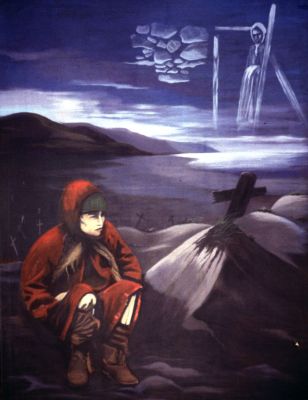 |
Famine
The Great Famine of the 1840s has had a major impact on how Ireland sees herself and the rest of the world. Irish humanitarianism and missionary work owes its dedication as much to this as to anything else. At school we always admonished to spare a thought and a penny for the starving children of Africa. Even today such appeals in Ireland are readily met.
It is estimated one and a half million people died of starvation in The Great Famine. Another million people emigrated. Marx and Engels, who both lived through these events, did a comprehensive study of the famine. They concluded that it was the exhaustion of the soil through the greed of the landed gentry that had brought about the famine.
Equally tragic is the fact that it was only the potato crop that failed in Ireland. Wheat, oats, beef, mutton, pork, and poultry were all in excellent supply but the Irish-English landlords shipped these to the rest of Europe to maintain their profits. Irish Catholics were brought up at home and school on stories about those ships leaving Irish ports loaded with food at the same time that their ancestors were eating grass to stay live.
Our painting shows a typical scene at the time. A starving child remembers his mother: In the background are numerous crucifixes marking graves dug in the sand dunes because it was so much easier to dig there than in hard ground.
CAIN Web Service
© the bogside artists
site developed by: Martin Melaugh
Back to the top of this page